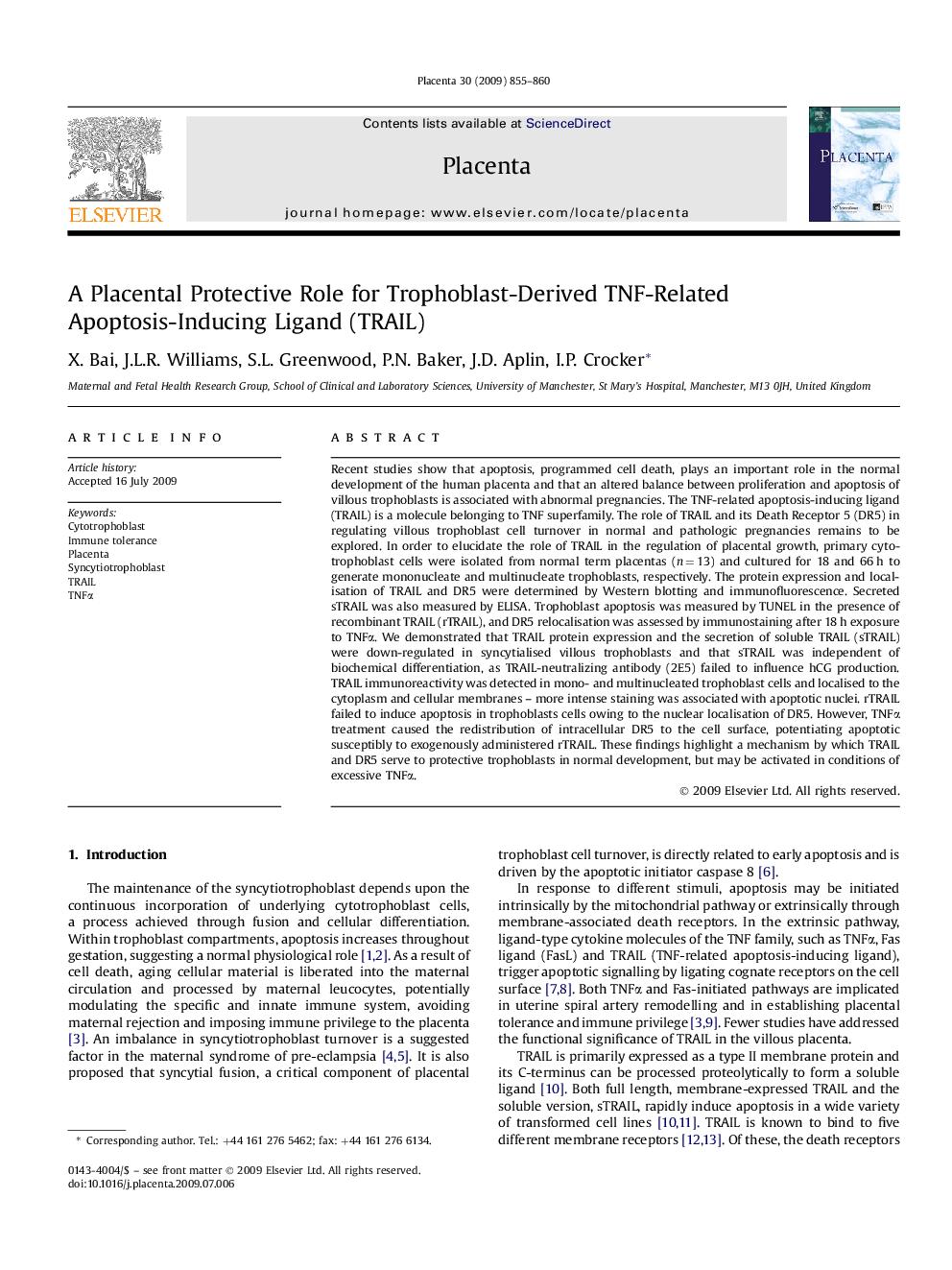| کد مقاله | کد نشریه | سال انتشار | مقاله انگلیسی | نسخه تمام متن |
|---|---|---|---|---|
| 2789279 | 1154489 | 2009 | 6 صفحه PDF | دانلود رایگان |

Recent studies show that apoptosis, programmed cell death, plays an important role in the normal development of the human placenta and that an altered balance between proliferation and apoptosis of villous trophoblasts is associated with abnormal pregnancies. The TNF-related apoptosis-inducing ligand (TRAIL) is a molecule belonging to TNF superfamily. The role of TRAIL and its Death Receptor 5 (DR5) in regulating villous trophoblast cell turnover in normal and pathologic pregnancies remains to be explored. In order to elucidate the role of TRAIL in the regulation of placental growth, primary cytotrophoblast cells were isolated from normal term placentas (n = 13) and cultured for 18 and 66 h to generate mononucleate and multinucleate trophoblasts, respectively. The protein expression and localisation of TRAIL and DR5 were determined by Western blotting and immunofluorescence. Secreted sTRAIL was also measured by ELISA. Trophoblast apoptosis was measured by TUNEL in the presence of recombinant TRAIL (rTRAIL), and DR5 relocalisation was assessed by immunostaining after 18 h exposure to TNFα. We demonstrated that TRAIL protein expression and the secretion of soluble TRAIL (sTRAIL) were down-regulated in syncytialised villous trophoblasts and that sTRAIL was independent of biochemical differentiation, as TRAIL-neutralizing antibody (2E5) failed to influence hCG production. TRAIL immunoreactivity was detected in mono- and multinucleated trophoblast cells and localised to the cytoplasm and cellular membranes – more intense staining was associated with apoptotic nuclei. rTRAIL failed to induce apoptosis in trophoblasts cells owing to the nuclear localisation of DR5. However, TNFα treatment caused the redistribution of intracellular DR5 to the cell surface, potentiating apoptotic susceptibly to exogenously administered rTRAIL. These findings highlight a mechanism by which TRAIL and DR5 serve to protective trophoblasts in normal development, but may be activated in conditions of excessive TNFα.
Journal: Placenta - Volume 30, Issue 10, October 2009, Pages 855–860